Design and Study of a Large-Scale Microwave Plasma Torch with Four Ports
Abstract
:1. Introduction
2. Geometric and Model
2.1. Geometric of MPT Device
2.2. Electromagnetic Field Model
2.3. Plasma Model
2.4. Fluid Model
3. Simulation and Optimization
3.1. The Plasma Generator Optimization
3.2. Plasma Torch Simulation and Analysis
4. Experimental Results and Discussion
4.1. Experimental System
4.2. Influence of Gas Inlet Modes on the Plasma Torch
4.3. Microwave Efficiency Analysis
5. Conclusions
Supplementary Materials
Author Contributions
Funding
Data Availability Statement
Conflicts of Interest
References
- Al-Shamma’a, A.I.; Wylie, S.R.; Lucas, J.; Pau, C.F. Design and construction of a 2.45 GHz waveguide-based microwave plasma jet at atmospheric pressure for material processing. J. Phys. D Appl. Phys. 2001, 34, 2734–2741. [Google Scholar] [CrossRef]
- Wylie, S.R.; Al-Shamma’a, A.I.; Lucas, J. Microwave plasma system for material processing. IEEE Trans. Plasma Sci. 2005, 33, 340–341. [Google Scholar] [CrossRef]
- Fleisch, T.; Kabouzi, Y.; Moisan, M.; Pollak, J.; Castaños-Martínez, E.; Nowakowska, H.; Zakrzewski, Z. Designing an efficient microwaveplasma source, independent of operating conditions, at atmospheric pressure. Plasma Sources Sci. Technol. 2006, 16, 173–182. [Google Scholar] [CrossRef]
- Wang, Z.; Zhang, G.X.; Jia, Z.D. A large-volume stable atmospheric air microwave plasma based on inductive coupling window—Rectangular resonator. IEEE Trans. Plasma Sci. 2014, 42, 1669–1673. [Google Scholar] [CrossRef]
- Xiao, W.; Liao, Y.; Wang, F.; Zhang, Z.; Zhu, H.; Yang, Y.; Huang, K. Determining Electron Density of Atmospheric Microwave Air Plasma Torch by Microwave Power Measurement. IEEE Trans. Plasma Sci. 2022, 50, 1781–1789. [Google Scholar] [CrossRef]
- Baeva, M.; Andrasch, M.; Ehlbeck, J.; Weltmann, K.D.; Loffhagen, D. Study of the Spatiotemporal Evolution of Microwave Plasma in Argon. IEEE Trans. Plasma Sci. 2014, 42, 2774–2775. [Google Scholar] [CrossRef]
- Tatarova, E.; Dias, F.M.; Felizardo, E.; Henriques, J.; Pinheiro, M.J.; Ferreira, C.M.; Gordiets, B. Microwave air plasma source at atmospheric pressure: Experiment and theory. J. Appl. Phys. 2010, 108, 123305. [Google Scholar] [CrossRef]
- Heberlein, J.V.R. Generation of thermal and pseudo-thermal plasmas. Pure Appl. Chem. 1992, 64, 629–636. [Google Scholar] [CrossRef]
- Zhang, W.; Tao, J.; Huang, K.; Wu, L. Numerical Investigation of the Surface Wave Formation in a Microwave Plasma Torch. IEEE Trans. Plasma Sci. 2017, 45, 2929–2939. [Google Scholar] [CrossRef]
- Shahnazari, A.; Rafiee, M.; Rohani, A.; Nagar, B.B.; Ebrahiminik, M.A.; Aghkhani, M.H. Identification of effective factors to select energy recovery technologies from municipal solid waste using multi-criteria decision making (MCDM): A review of thermochemical technologies. Sustain. Energy Technol. Assess. 2020, 40, 100737. [Google Scholar] [CrossRef]
- Yayalık, İ.; Koyun, A.; Akgün, M. Gasification of municipal solid wastes in plasma arc medium. Plasma Chem. Plasma Process. 2020, 40, 1401–1416. [Google Scholar] [CrossRef]
- Sanders, N.A.; Pfender, E. Measurement of anode falls and anode heat transfer in atmospheric pressure high intensity arcs. J. Appl. Phys. 1984, 55, 714–722. [Google Scholar] [CrossRef]
- Jenista, J.; Heberlein, J.; Pfender, E. Model for Anode Heat Transfer from an Electric Arc. In Proceedings of the 4th International Thermal Plasma Processes Conference, Athens, Greece, 15–18 July 1996. [Google Scholar]
- Gabbar, H.A.; Darda, S.A.; Damideh, V.; Hassen, I.; Aboughaly, M.; Lisi, D. Comparative study of atmospheric pressure DC, RF, and microwave thermal plasma torches for waste to energy applications. Sustain. Energy Technol. Assess. 2021, 47, 101447. [Google Scholar] [CrossRef]
- Kim, J.H.; Hong, Y.C.; Kim, H.S.; Uhm, H.S. Simple microwave plasma source at atmospheric pressure. J. Korean Phys. Soc. 2003, 42, S876–S879. [Google Scholar]
- Kwak, H.S.; Uhm, H.S.; Hong, Y.C.; Choi, E.H. Disintegration of carbon dioxide molecules in a microwave plasma torch. Sci. Rep. 2015, 5, 18436. [Google Scholar] [CrossRef]
- Shin, D.H.; Hong, Y.C.; Lee, S.J.; Kim, Y.J.; Cho, C.H.; Ma, S.H.; Chun, S.M.; Lee, B.J.; Uhm, H.S. A pure steam microwave plasma torch: Gasification of powdered coal in the plasma. Surf. Coat. Technol. 2013, 228, S520–S523. [Google Scholar] [CrossRef]
- Xiao, W.; Huang, K.; Zhang, W.; Lin, Y. Modeling of Argon Plasma Excited by Microwave at Atmospheric Pressure in Ridged Waveguide. IEEE Trans. Plasma Sci. 2016, 44, 1075–1082. [Google Scholar] [CrossRef]
- Chen, W.; Zhang, Y.; Wang, Y.; Zhong, Y.; Huang, K. A novel high-efficiency microwave plasma multi-ridges field compressed reactor. Phys. Plasmas 2023, 30, 023502. [Google Scholar] [CrossRef]
- D’Isa, F.A.; Carbone, E.; Hecimovic, A.; Fantz, U. Performance analysis of a 2.45 GHz microwave plasma torch for CO2 decomposition in gas swirl configuration. Plasma Sources Sci. Technol. 2020, 29, 105009. [Google Scholar] [CrossRef]
- Nowakowska, H.; Czylkowski, D.; Hrycak, B.; Jasiński, M. Characterization of a novel microwave plasma sheet source operated at atmospheric pressure. Plasma Sources Sci. Technol. 2018, 27, 085008. [Google Scholar] [CrossRef]
- Ouyang, Z.; Surla, V.; Cho, T.S.; Ruzic, D.N. Characterization of an atmospheric-pressure helium plasma generated by 2.45-GHz microwave power. IEEE Trans. Plasma Sci. 2012, 40, 3476–3481. [Google Scholar] [CrossRef]
- Leins, M.; Kopecki, J.; Gaiser, S.; Schulz, A.; Walker, M.; Schumacher, U.; Stroth, U.; Hirth, T. Microwave plasmas at atmospheric pressure. Contrib. Plasma Phys. 2014, 54, 14–26. [Google Scholar] [CrossRef]
- Kabouzi, Y.; Moisan, M.; Rostaing, J.; Trassy, C.; Guerin, D.; Kéroack, D.; Zakrzewski, Z. Abatement of perfluorinated compounds using microwave plasmas at atmospheric pressure. J. Appl. Phys. 2003, 93, 9483–9496. [Google Scholar] [CrossRef]
- Hrycak, B.; Czylkowski, D.; Miotk, R.; Dors, M.; Jasinski, M.; Mizeraczyk, J. Application of atmospheric pressure microwave plasma source for hydrogen production from ethanol. Int. J. Hydrogen Energy 2014, 39, 14184–14190. [Google Scholar] [CrossRef]
- Darafsheh, A. Optical Super-Resolution and Periodical Focusing Effects by Dielectric Microspheres. Ph.D. Dissertation, University of North Carolina at Charlotte, Charlotte, NC, USA, 2013. [Google Scholar]
- Cuenca, J.A.; Mandal, S.; Thomas, E.L.H.; Williams, O.A. Microwave plasma modelling in clamshell chemical vapour deposition diamond reactors. Diam. Relat. Mater. 2022, 124, 108917. [Google Scholar] [CrossRef]
- Su, J.J.; Li, Y.F.; Li, X.L.; Yao, P.L.; Liu, Y.Q.; Ding, M.H.; Tang, W.Z. A novel microwave plasma reactor with a unique structure for chemical vapor deposition of diamond films. Diam. Relat. Mater. 2014, 42, 28–32. [Google Scholar] [CrossRef]
- Lieberman, M.A.; Lichtenberg, A.J. Principles of Plasma Discharges and Materials Processing, 2nd ed.; Wiley: Hoboken, NJ, USA, 2005; pp. 95–97. [Google Scholar]
- Shen, Q.; Huang, R.; Xu, Z.; Hua, W. Numerical 3D Modeling: Microwave Plasma Torch at Intermediate Pressure. Appl. Sci. 2020, 10, 5393. [Google Scholar] [CrossRef]
- Baeva, M.; Hempel, F.; Baierl, H.; Trautvetter, T.; Foest, R.; Loffhagen, D. Two- and three-dimensional simulation analysis of microwave excited plasma for deposition applications: Operation with argon at atmospheric pressure. J. Phys. D Appl. Phys. 2018, 51, 385202. [Google Scholar] [CrossRef]
- Lazarou, C.; Anastassiou, C.; Topala, I.; Chiper, A.S.; Mihaila, I.; Pohoata, V.; Georghiou, G.E. Numerical simulation of capillary helium and helium-oxygen atmospheric pressure plasma jets: Propagation dynamics and interaction with dielectric. Plasma Sources Sci. Technol. 2018, 27, 105007. [Google Scholar] [CrossRef]
- Lazarou, C.; Belmonte, T.; Chiper, A.S.; Georghiou, G.E. Numerical modelling of the effect of dry air traces in a helium parallel plate dielectric barrier discharge. Plasma Sources Sci. Technol. 2016, 25, 055023. [Google Scholar] [CrossRef]
- Ashida, S.; Lee, C.; Lieberman, M.A. Spatially averaged (global) model of time modulated high density argon plasmas. J. Vac. Sci. Technol. A Vac. Surf. Films 1995, 13, 2498–2507. [Google Scholar] [CrossRef]
- Baeva, M.; Andrasch, M.; Ehlbeck, J.; Loffhagen, D.; Weltmann, K.-D. Temporally and spatially resolved characterization of microwave induced argon plasmas: Experiment and modeling. J. Appl. Phys. 2014, 115, 143301. [Google Scholar] [CrossRef]
- Nakajima, J.; Sekiguchi, H. Synthesis of ammonia using microwave discharge at atmospheric pressure. Thin Solid Films 2018, 516, 4446–4451. [Google Scholar] [CrossRef]
- Zhong, N.; Chen, W.; Zhang, Y.; Wu, L.; Huang, K. A Novel High Energy Efficiency Dual-Channel Microwave Plasma Jet Using Strip Line. IEEE Trans. Plasma Sci. 2021, 49, 3086–3091. [Google Scholar] [CrossRef]
- Zhang, W.; Wu, L.; Tao, J.; Huang, K. Numerical Investigation of the Gas Flow Effects on Surface Wave Propagation and Discharge Properties in a Microwave Plasma Torch. IEEE Trans. Plasma Sci. 2019, 47, 271–277. [Google Scholar] [CrossRef]

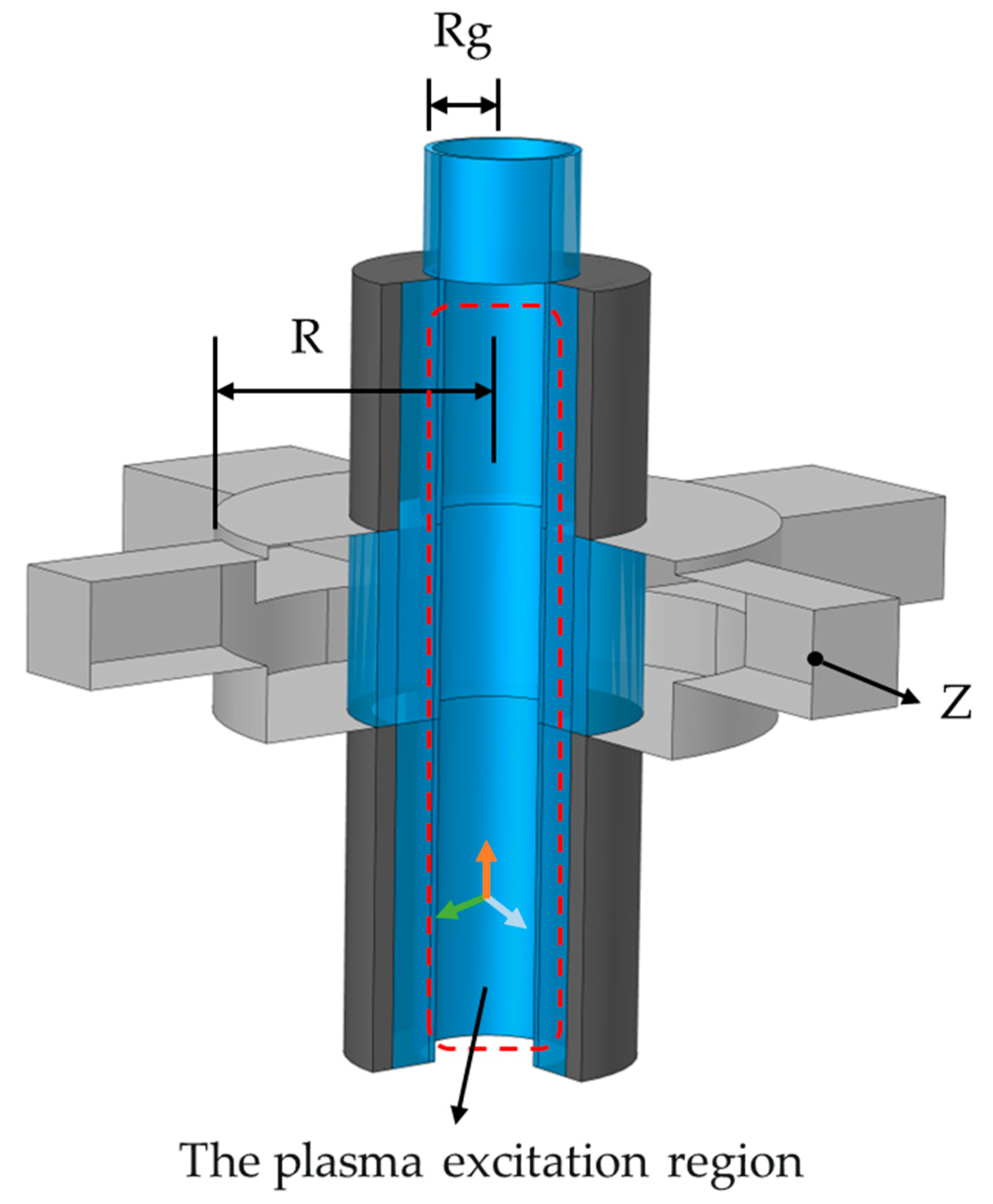

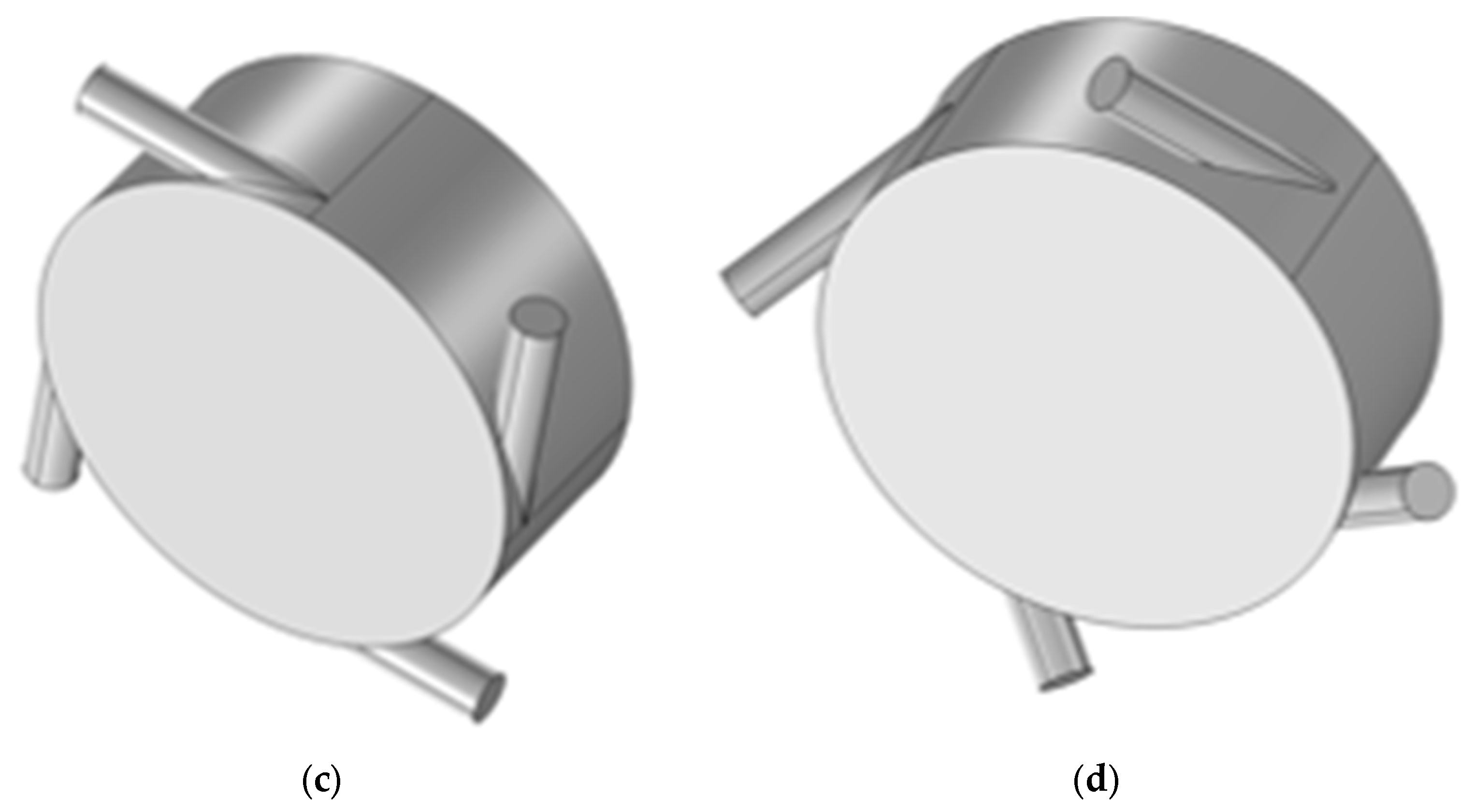

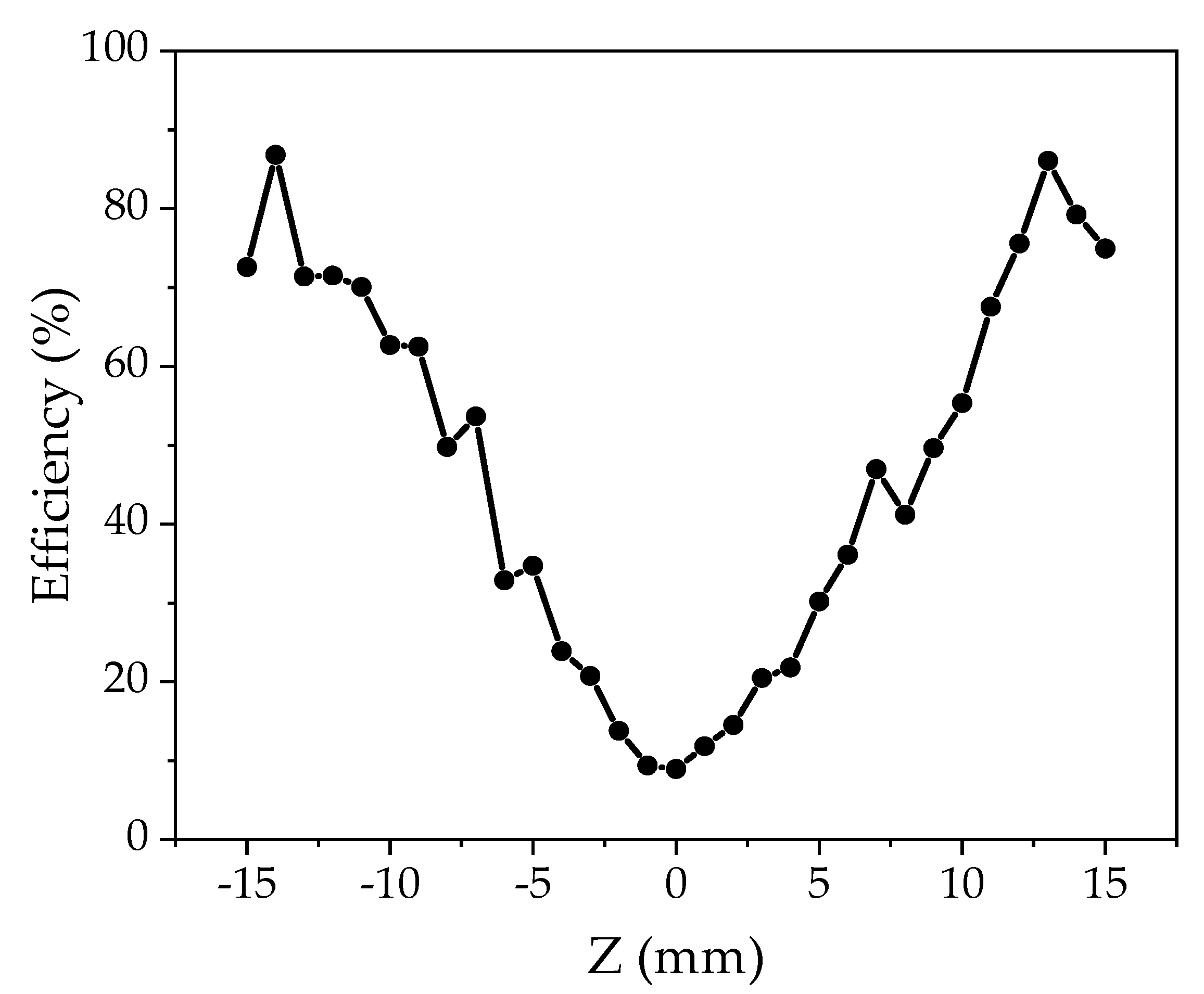
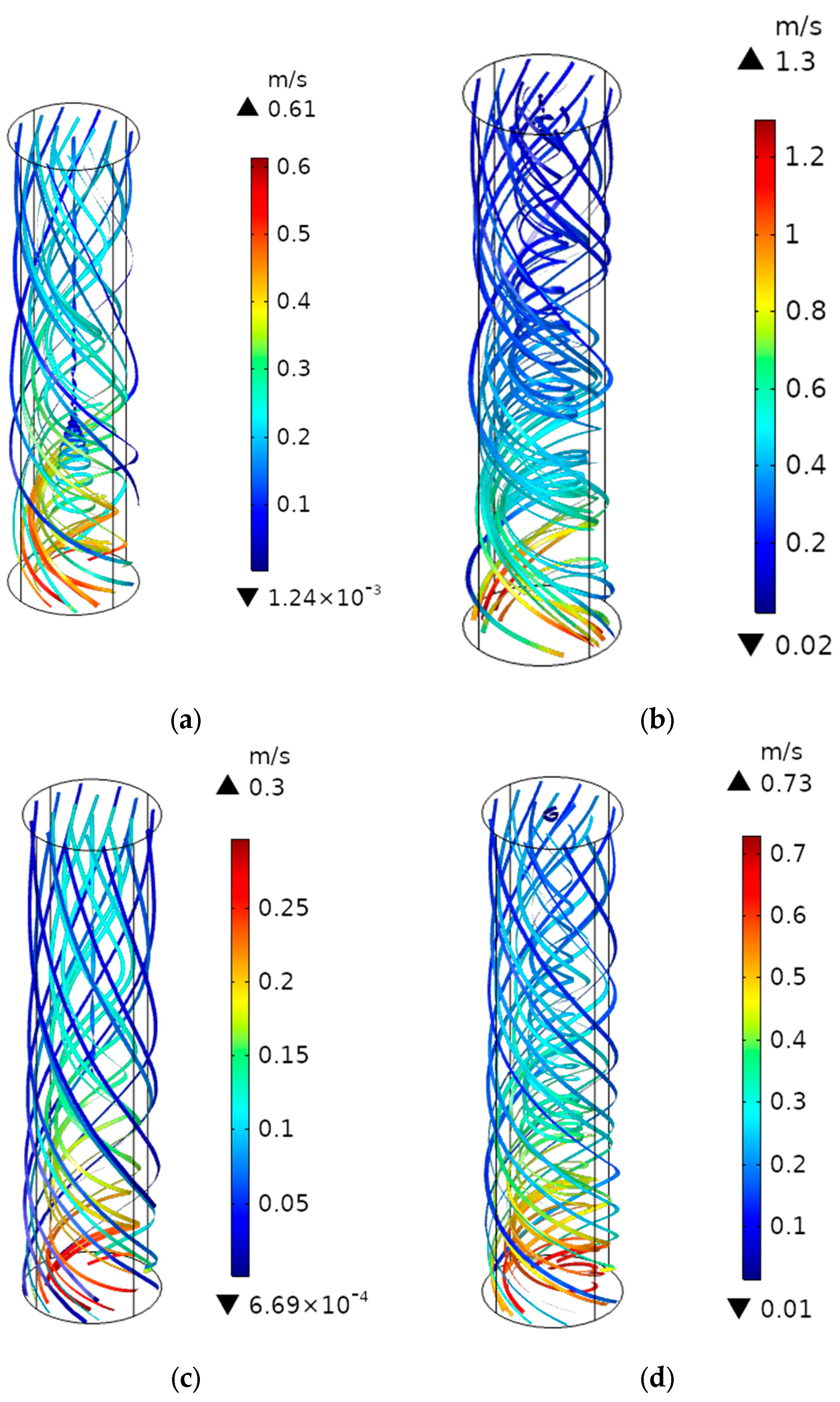
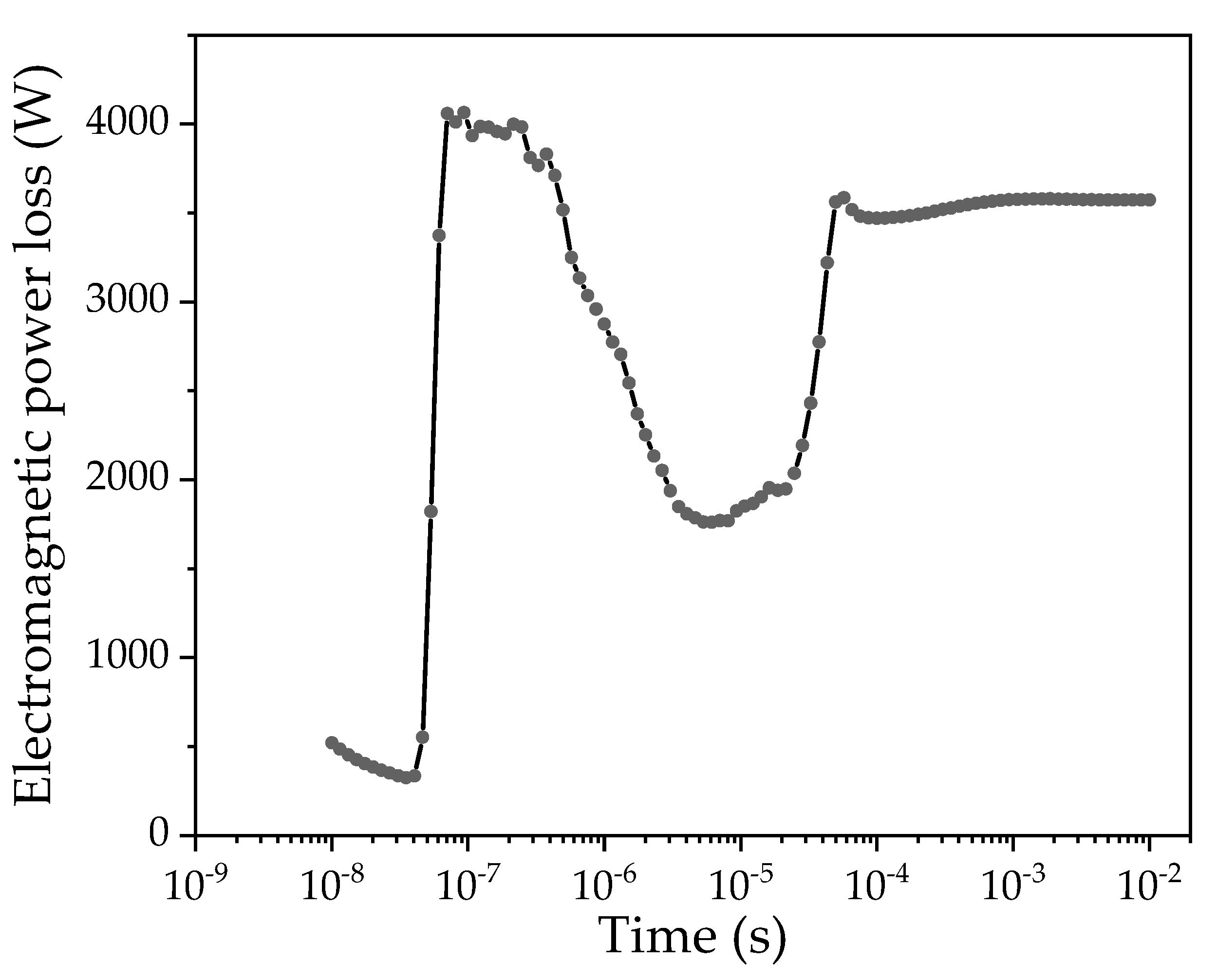

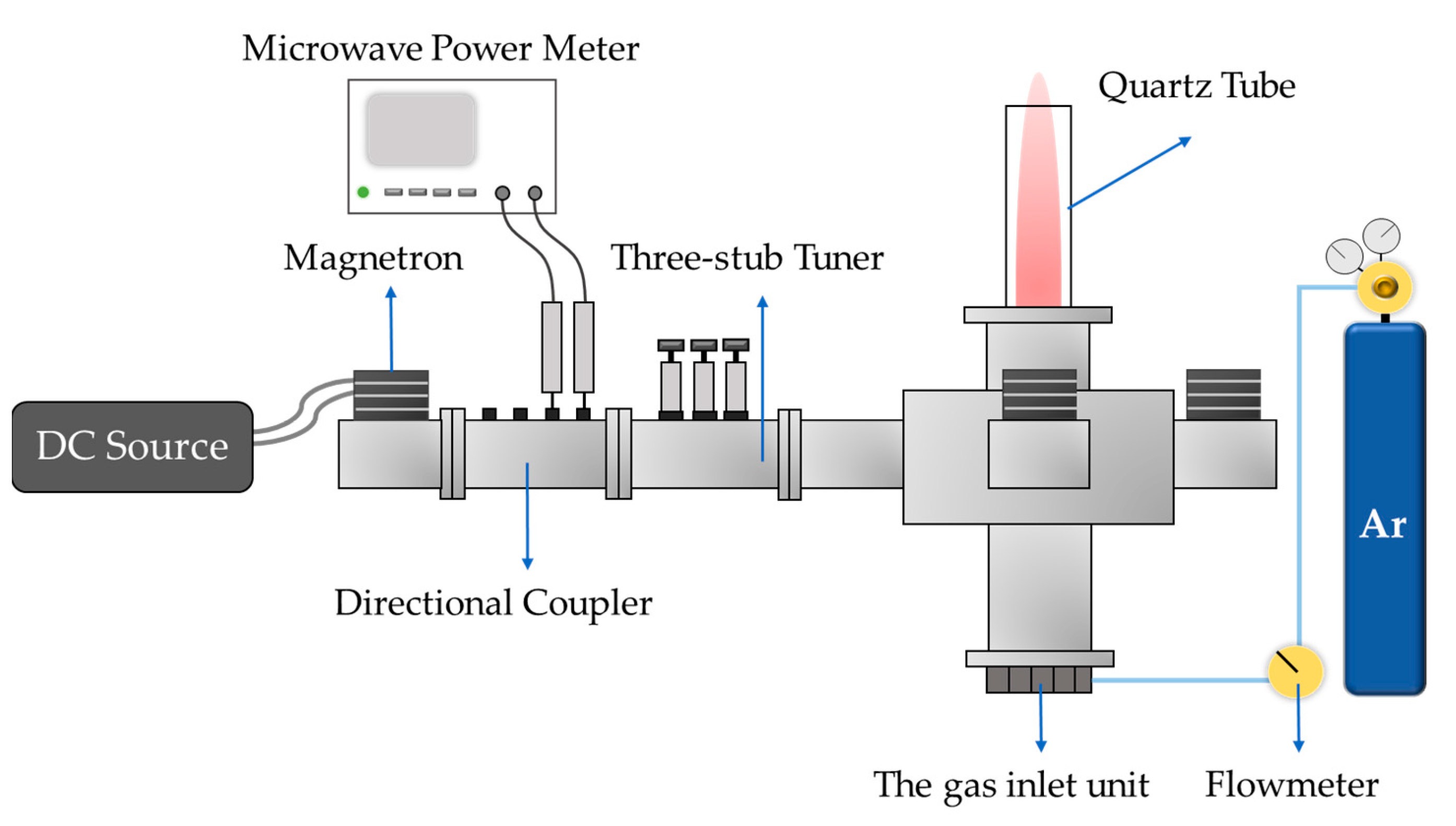
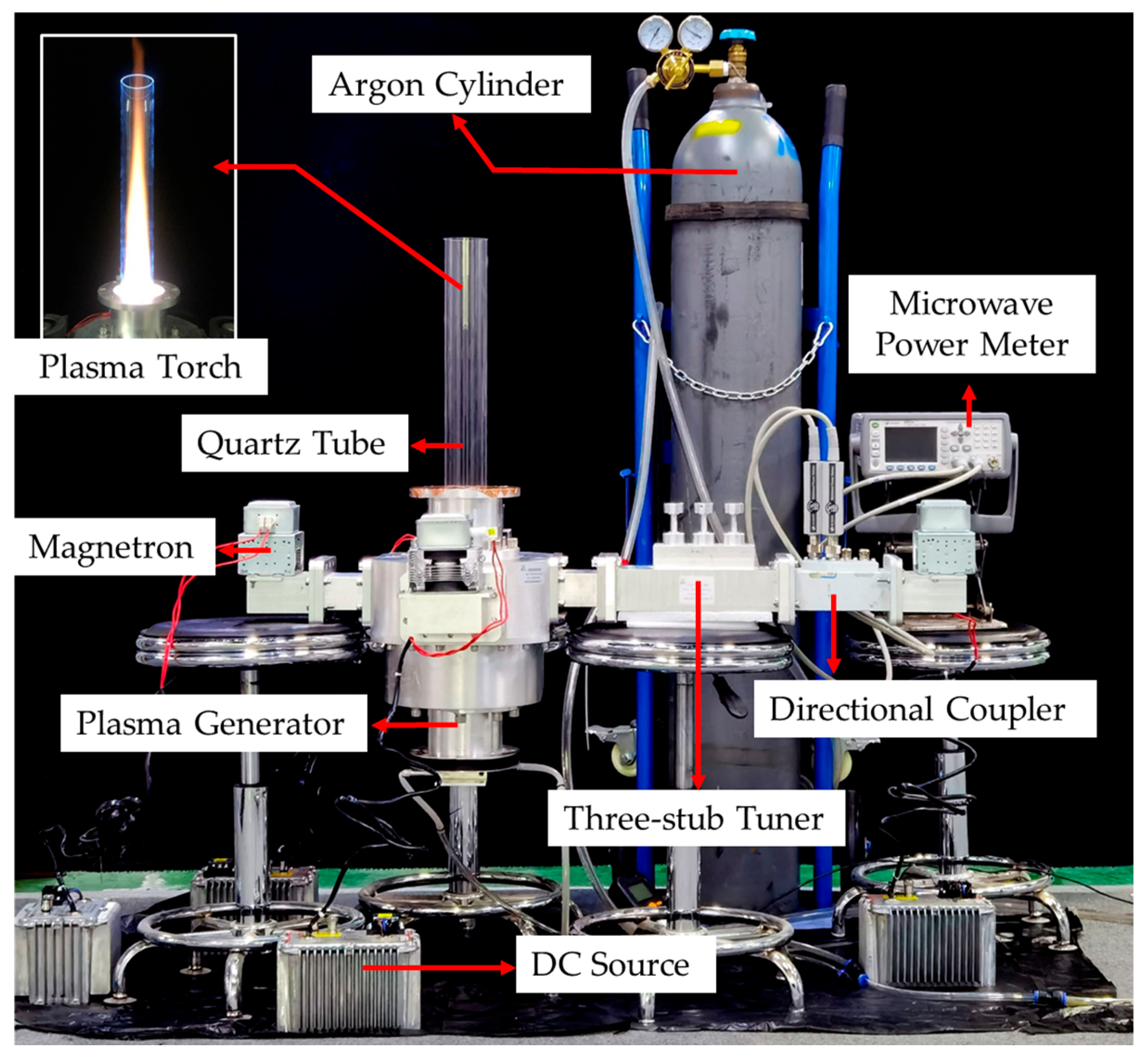
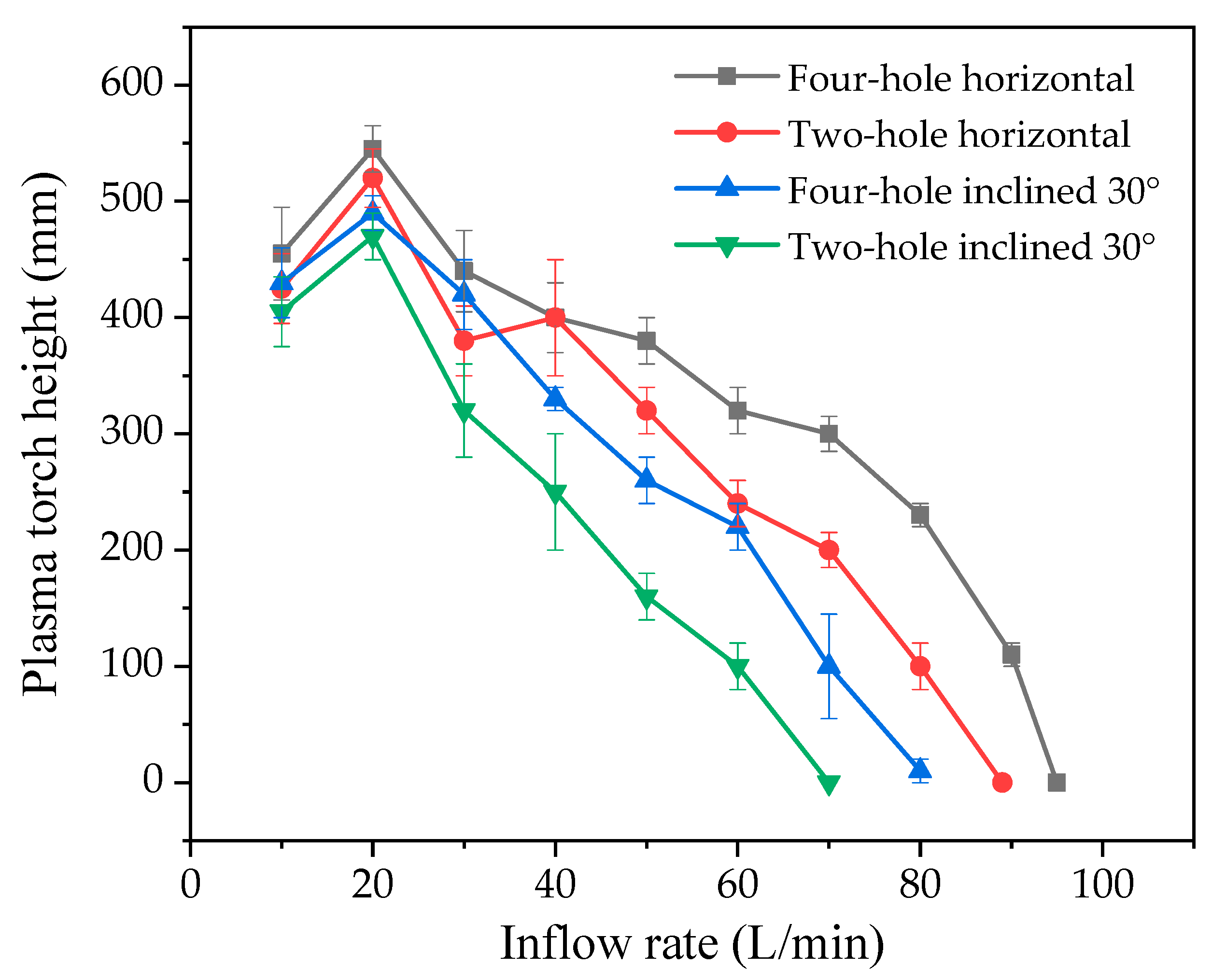
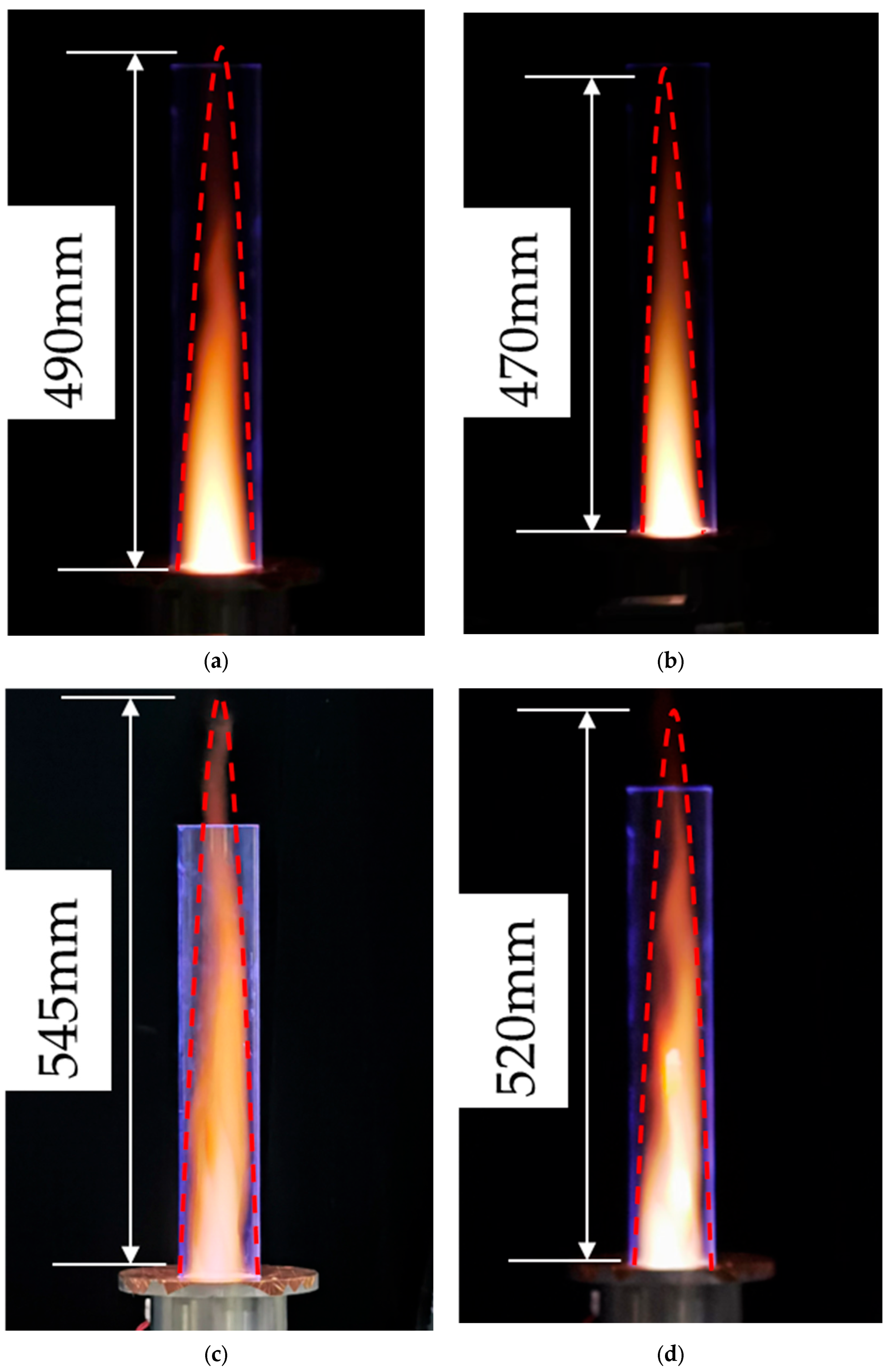
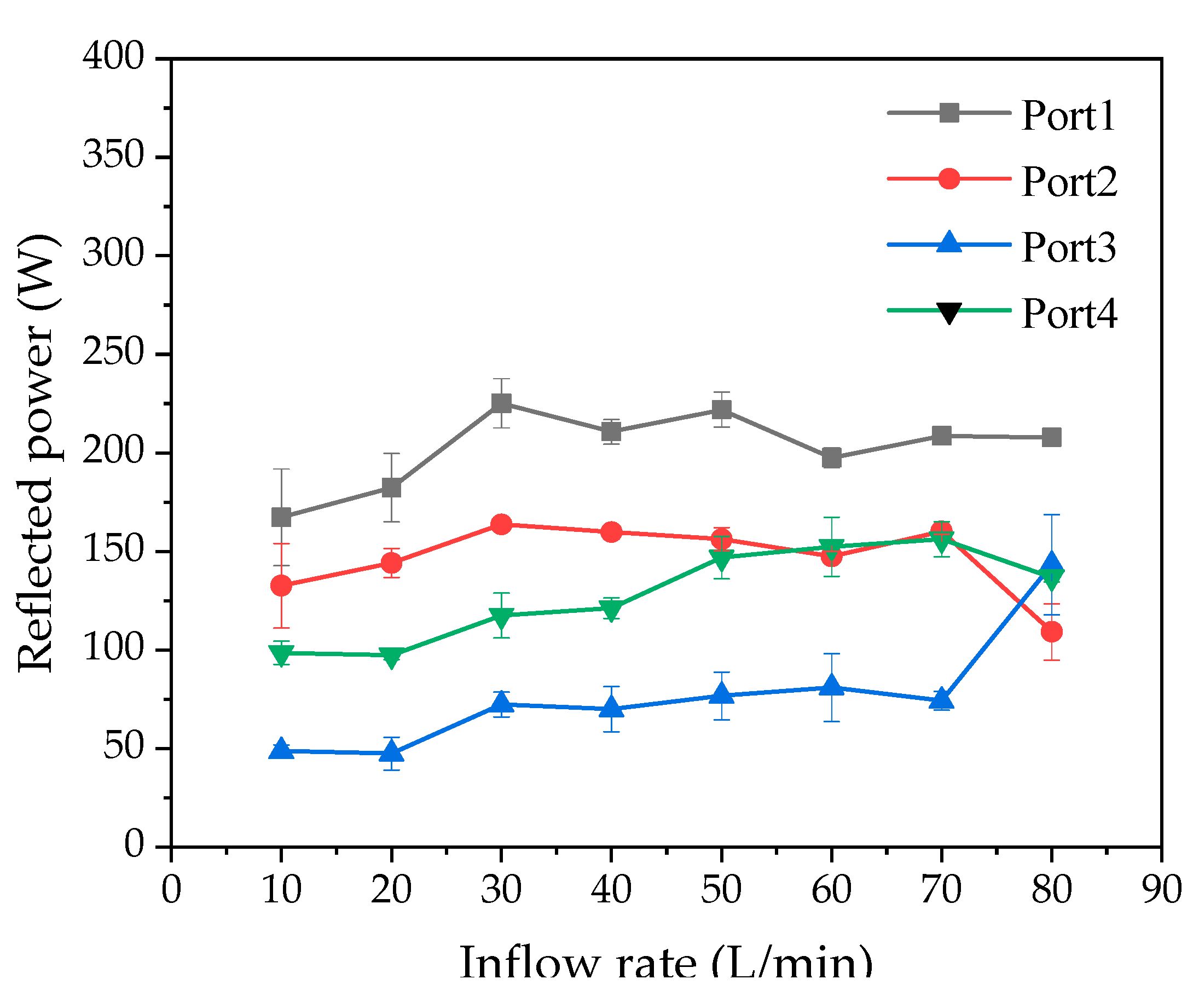
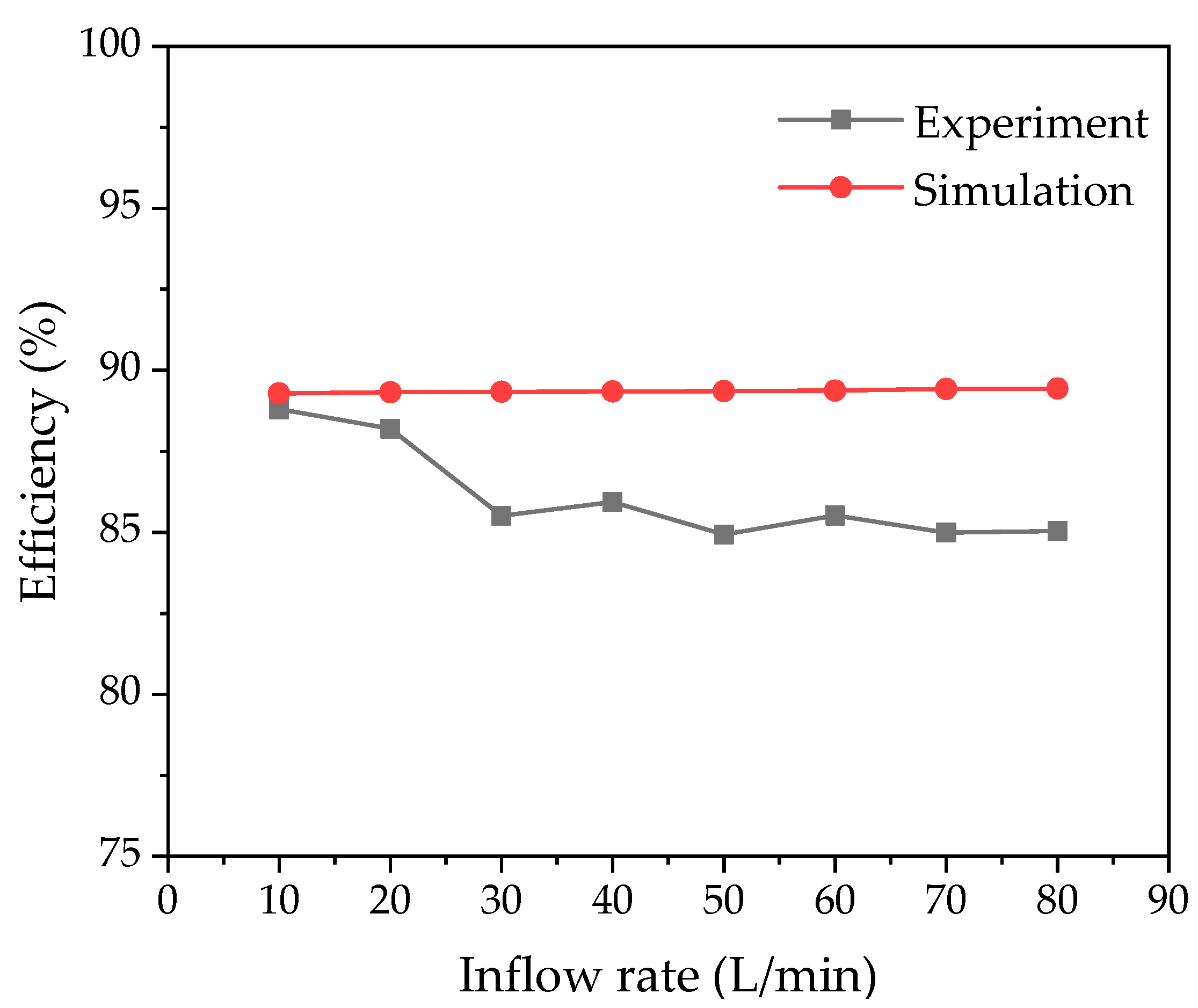
Disclaimer/Publisher’s Note: The statements, opinions and data contained in all publications are solely those of the individual author(s) and contributor(s) and not of MDPI and/or the editor(s). MDPI and/or the editor(s) disclaim responsibility for any injury to people or property resulting from any ideas, methods, instructions or products referred to in the content. |
© 2023 by the authors. Licensee MDPI, Basel, Switzerland. This article is an open access article distributed under the terms and conditions of the Creative Commons Attribution (CC BY) license (https://creativecommons.org/licenses/by/4.0/).
Share and Cite
Hu, Y.; Zhang, W.; Han, J.; Zhu, H.; Yang, Y. Design and Study of a Large-Scale Microwave Plasma Torch with Four Ports. Processes 2023, 11, 2589. https://doi.org/10.3390/pr11092589
Hu Y, Zhang W, Han J, Zhu H, Yang Y. Design and Study of a Large-Scale Microwave Plasma Torch with Four Ports. Processes. 2023; 11(9):2589. https://doi.org/10.3390/pr11092589
Chicago/Turabian StyleHu, Yedai, Wencong Zhang, Jiahui Han, Huacheng Zhu, and Yang Yang. 2023. "Design and Study of a Large-Scale Microwave Plasma Torch with Four Ports" Processes 11, no. 9: 2589. https://doi.org/10.3390/pr11092589







